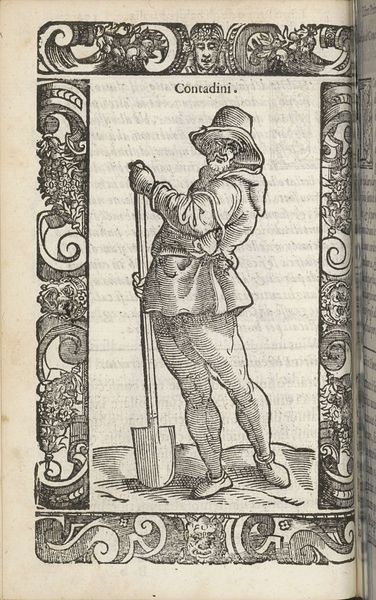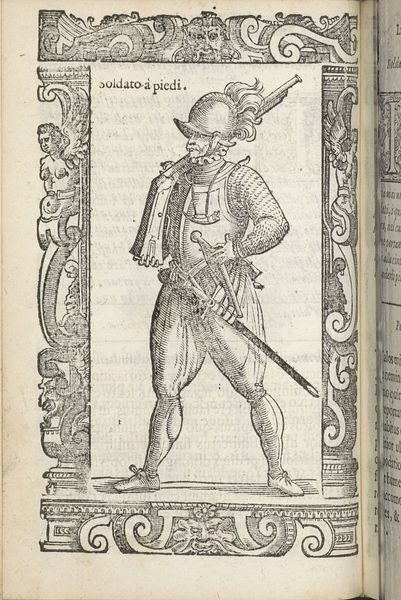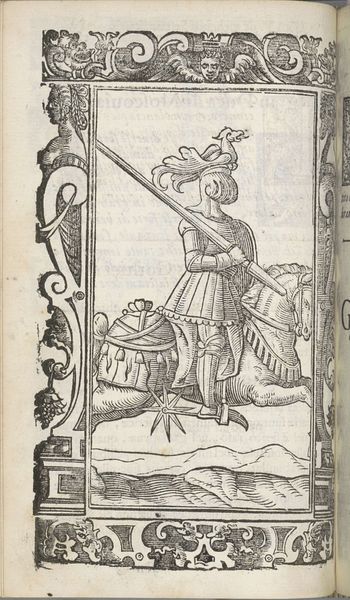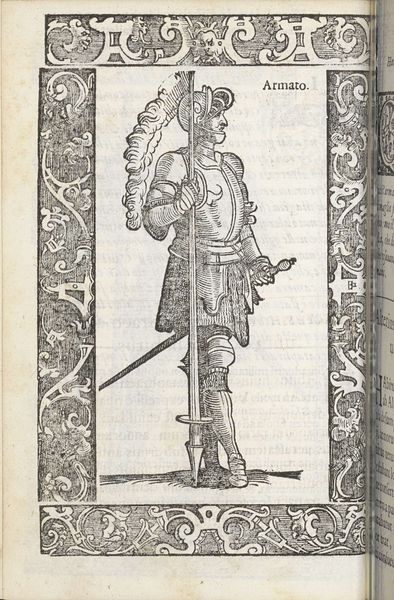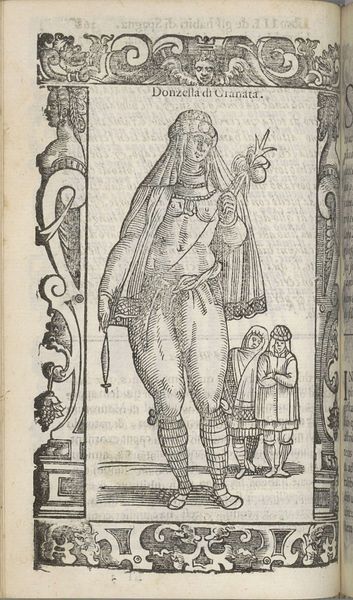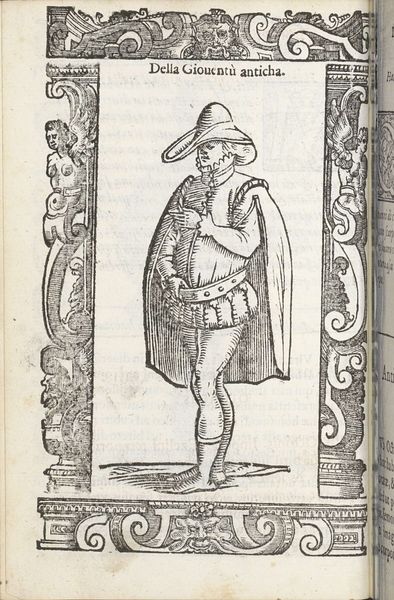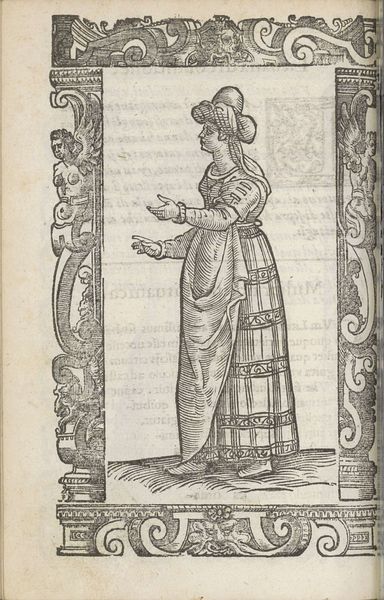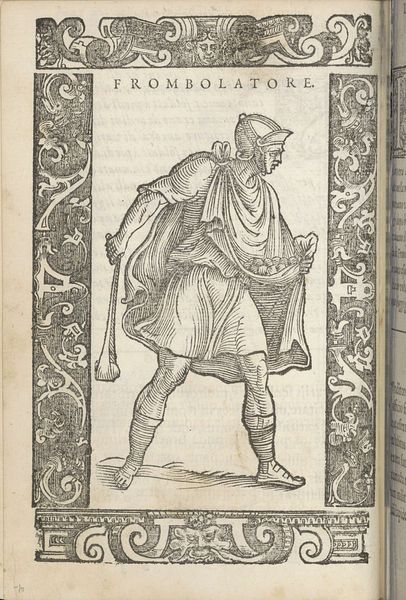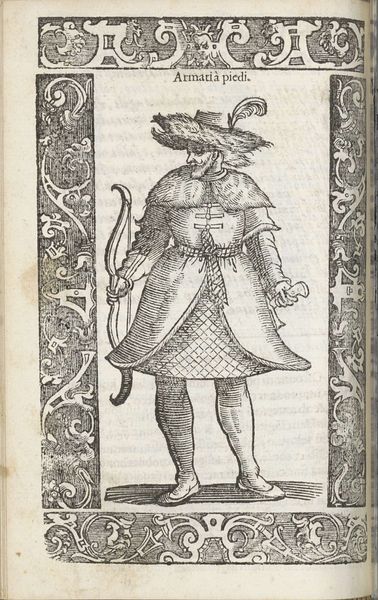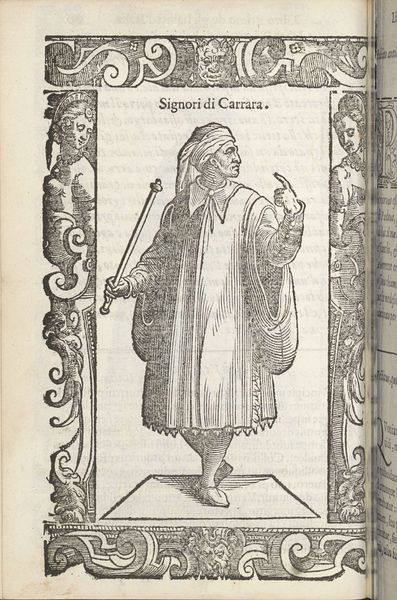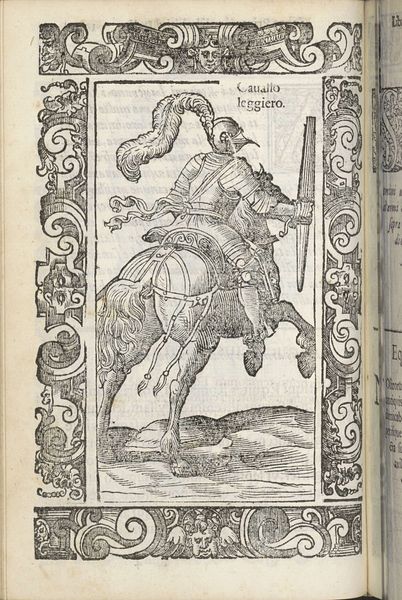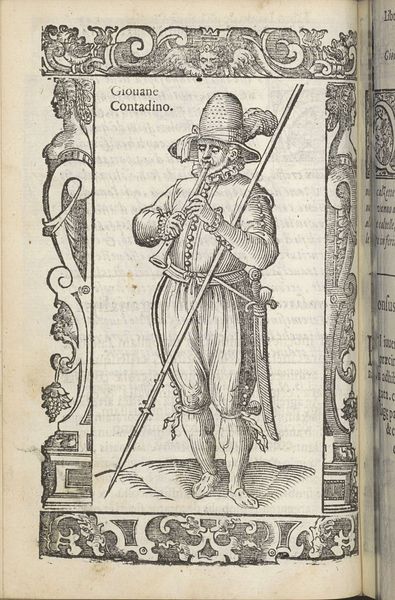
print, engraving
#
portrait
#
baroque
# print
#
old engraving style
#
figuration
#
line
#
genre-painting
#
history-painting
#
engraving
Dimensions: height 167 mm, width 125 mm
Copyright: Rijks Museum: Open Domain
Editor: So this is "Cestaruoli," an engraving by Christoph Krieger, dating back to 1598. The starkness of the lines really strikes me. It seems to depict an everyday scene. What's your take on it? Curator: As a materialist, I'm interested in how this engraving functions within its socio-economic context. Prints like this one democratized imagery, taking it beyond the realm of unique, commissioned paintings for the wealthy. This piece represents a very specific mode of production and dissemination. Editor: Democratization through prints... That's interesting. What does the image itself, the basket seller, tell us about that world? Curator: Consider the subject matter: a street vendor. This print doesn't depict royalty or religious figures. It represents the burgeoning merchant class, those involved in the buying and selling of everyday goods. What raw materials comprise the vendor’s wares and clothing, and how does this print offer insights into production cycles of the period? Editor: The basket of what looks like eggs and maybe some bread...and he’s holding a fowl. The print implies an availability, perhaps even an abundance, of certain goods. I guess these could reach more people. Curator: Precisely. Now think about the process of engraving itself. It's labor-intensive, requiring skilled artisans to transfer images onto copper plates. Each print, a multiple, then carries the traces of that labor. How does the dissemination of such imagery potentially reshape concepts of value, not just of food or material goods, but perhaps even that of skilled labour itself? Editor: So, this isn’t just a picture, but evidence of an evolving system of production, labour, and consumption? Curator: Exactly. The print’s value resides in its accessibility and ability to reflect the values of that era’s increasingly productive, market-oriented, economy. Editor: I hadn’t thought of it that way, seeing it as connected to everyday work and market systems. Thanks! Curator: And thank you; you pushed me to think about how these historical objects carry these ideas.
Comments
No comments
Be the first to comment and join the conversation on the ultimate creative platform.

